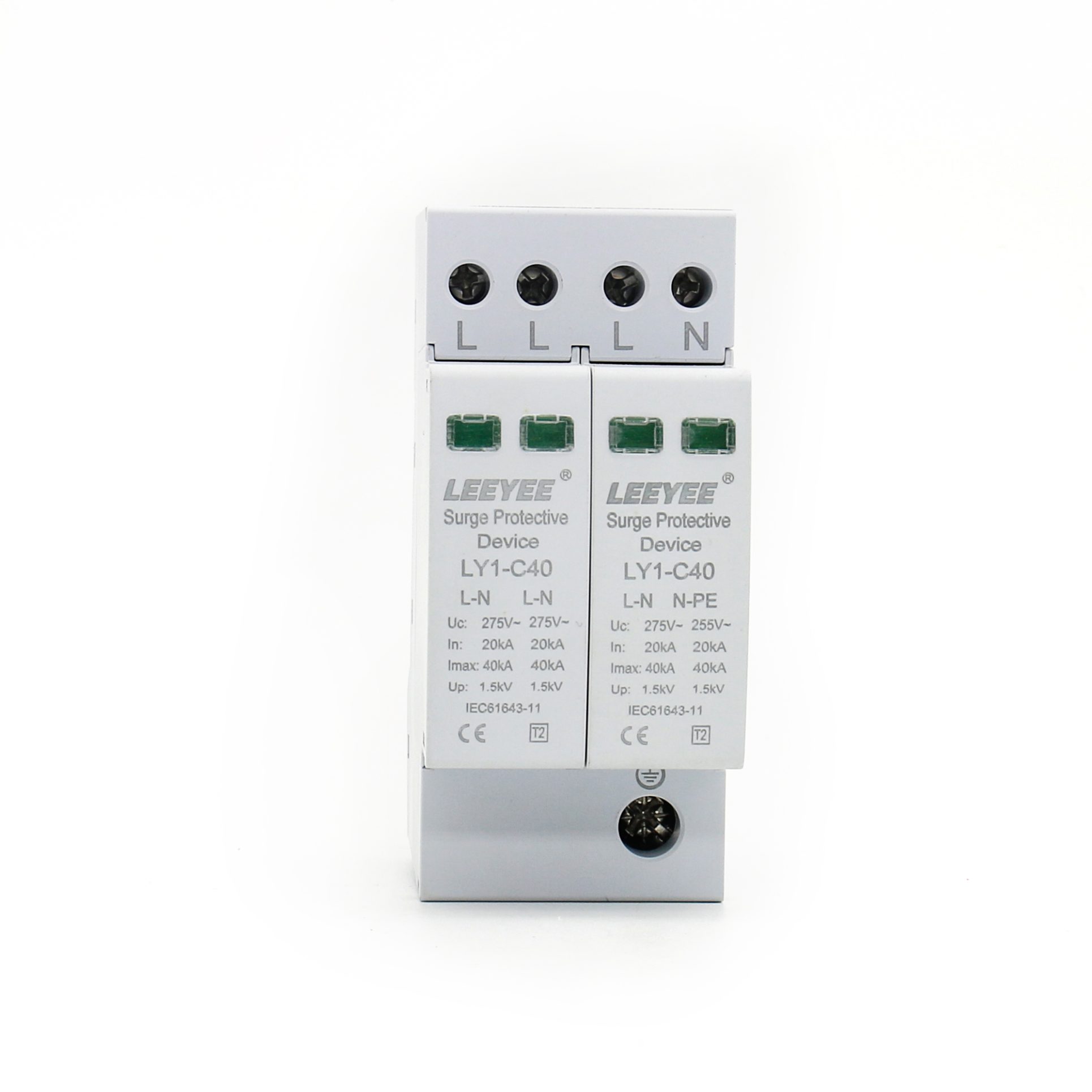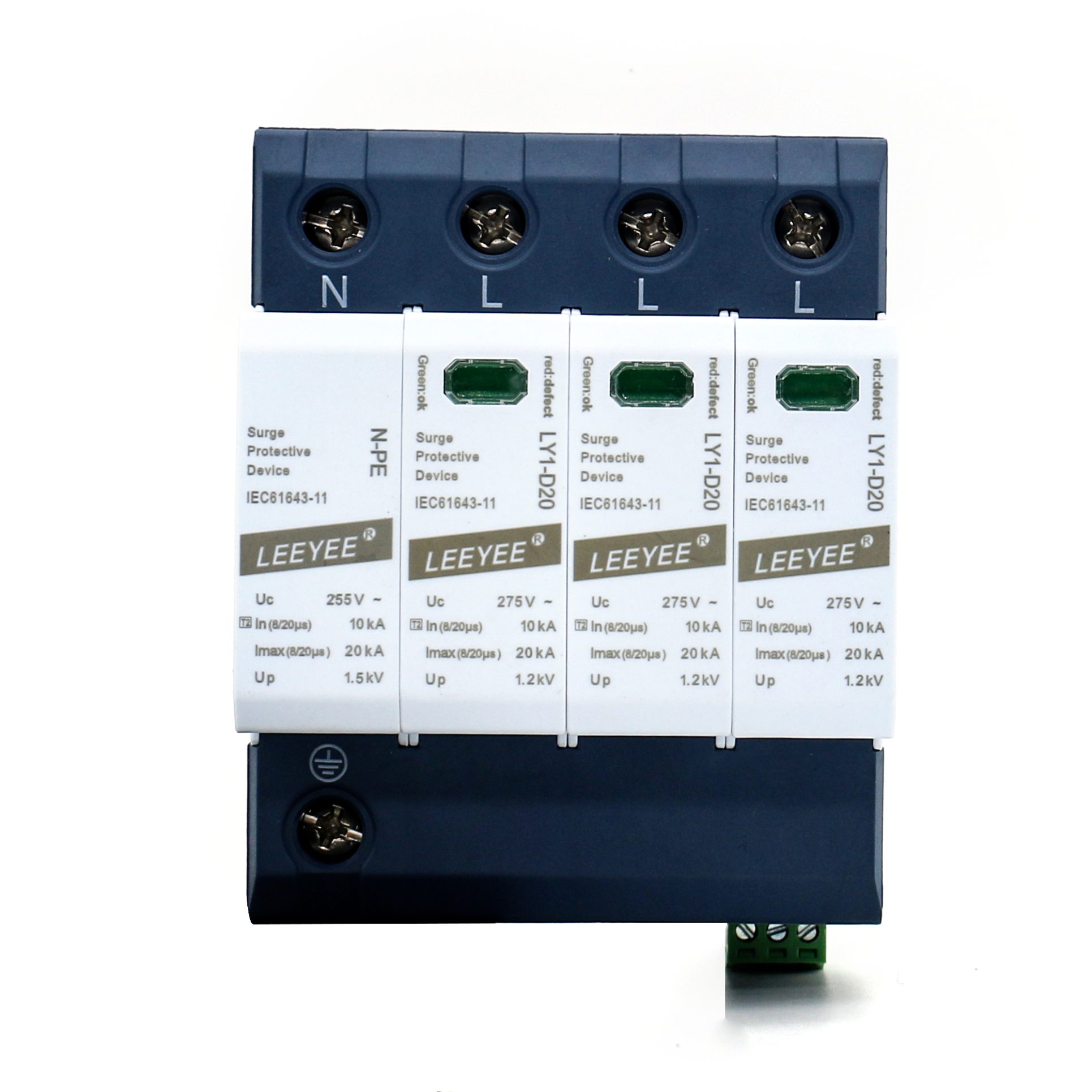Table of Contents
Introduction
With the increasing popularity of renewable energy, the solar surge protector plays a crucial role in safeguarding solar power systems from voltage spikes. As more homes and businesses adopt solar panels and inverters, understanding the importance of the solar surge protector becomes essential. This article will delve into the concept, significance, working principles, selection methods, installation tips, and maintenance and testing of solar surge protectors.
What is a Solar Surge Protector?
A solar surge protector is a specially designed device that protects solar power systems from transient voltage spikes caused by lightning strikes, grid switching, or other electrical disturbances. These surges can damage sensitive components such as inverters, batteries, and solar panels, leading to expensive repair or replacement costs.
Importance of Solar Surge Protectors
- Prevent Equipment Damage: Solar power systems consist of delicate devices susceptible to voltage spikes. A solar surge protector ensures the longevity of these components by diverting excess voltage to the ground.
- Enhance System Reliability: By preventing surges, a solar surge protector contributes to the overall reliability of solar power systems, reducing downtime and maintenance costs.
- Ensure Safety: Protecting solar power systems from surges not only safeguards investments but also enhances safety by preventing potential fire hazards caused by electrical surges.
- Increase Energy Efficiency: When the system is protected from damage, the efficiency of solar power generation is improved, maximizing energy utilization.
How Solar Surge Protectors Work
A solar surge protector protects devices by detecting excess voltage and diverting surges to the ground. They typically consist of several components, including:
- Metal Oxide Varistors (MOV): These components absorb excess voltage and clamp it to a safe level, protecting connected devices.
- Gas Discharge Tubes (GDT): For high-energy surges, GDTs provide additional protection by diverting the surge away from sensitive equipment.
- Diodes: In DC systems, diodes are used to prevent reverse current during surge events.
Surge Protection Workflow
- Voltage Monitoring: A solar surge protector continuously monitors the voltage flowing through the circuit.
- Surge Detection: When the voltage exceeds a predetermined threshold, the solar surge protector detects the surge.
- Voltage Diversion: Once a surge is detected, the MOV quickly responds to divert the excess voltage to the ground, protecting connected devices.
- Restoration: After normal voltage levels are restored, the solar surge protector resets to standby mode, ready to respond to the next surge.
Types of Solar Surge Protectors
Type 1 Surge Protectors: These devices are installed at the service entrance of the solar power system and are primarily used to prevent external surges, such as those caused by lightning strikes.
Type 2 Surge Protectors: Typically installed near inverters or on distribution panels, these protect against internal surges caused by switching operations or system faults.
Type 3 Surge Protectors: Used for point-to-point protection, these devices protect individual equipment, such as inverters or batteries, from localized surges.
Selecting the Right Solar Surge Protector
When choosing a solar surge protector, it is crucial to consider the following factors:
Surge Current Rating: Measured in kiloamperes (kA), this rating indicates the amount of surge current the device can withstand. Select a solar surge protector with a surge current rating that matches or exceeds the expected surge levels in your area.
Clamping Voltage: This is the maximum voltage that the solar surge protector allows to pass through to connected devices. A lower clamping voltage means better protection, as it indicates a quicker response to surges.
Response Time: The response time of a solar surge protector is critical to its effectiveness. A faster response time indicates better protection against transient surges. Look for devices with response times measured in nanoseconds.
Certifications and Standards: Ensure that the selected solar surge protector complies with relevant safety standards, such as UL 1449 and IEC 61643-11. Certified products have undergone rigorous testing to ensure their reliability and effectiveness.
Installation of Solar Surge Protectors
Proper installation of a solar surge protector is vital for optimal performance. Here are some key installation tips:
Follow Manufacturer Guidelines: Always adhere to the installation instructions provided by the manufacturer to ensure proper setup of the solar surge protector.
Location Selection: Install Type 1 solar surge protectors at the service entrance, Type 2 near the inverter or distribution panel, and Type 3 for additional point-to-point protection.
Grounding: Ensure that the solar surge protector is correctly grounded according to local electrical codes to provide a safe path for surge diversion.
Regular Inspections: After installation, regularly check the status of the solar surge protector to ensure there are no signs of damage or malfunction.
Maintenance and Testing of Solar Surge Protectors
Regular maintenance and testing of solar surge protectors are essential for ensuring their proper functioning. Here are some best practices:
Visual Inspection: Regularly check the solar surge protector for signs of damage, wear, or malfunction.
Testing: Conduct routine tests to verify that the device operates as expected and can handle surge events.
Replacement: If the solar surge protector has experienced significant surge events, consider replacing it to maintain continuous protection.
Professional Inspections: Periodically invite a professional electrical engineer to inspect the system to ensure the safety and effectiveness of all equipment.
Market Outlook for Solar Surge Protectors
As renewable energy technology continues to advance, the demand for solar surge protectors is on the rise. More homes and businesses are realizing the importance of protecting their solar systems, leading to increased demand for efficient and reliable surge protection solutions.
Technological Advancements: The introduction of new technologies has significantly enhanced the performance and reliability of solar surge protectors. For example, smart solar surge protectors can optimize protection by monitoring system status and providing real-time data.
Adaptive Design: Modern solar surge protectors increasingly focus on adaptive designs, allowing them to accommodate various types of solar power systems and environmental conditions.
Policy Support: Many countries and regions are implementing incentives to encourage the use of solar and other renewable energy sources, further driving the demand for solar surge protection devices.
Conclusion
In summary, a solar surge protector is an essential device for anyone using solar power systems. By understanding their significance, functionality, and how to choose the appropriate devices, you can ensure the longevity and reliability of your solar power system. Investing in a high-quality solar surge protector not only protects your equipment but also contributes to the overall safety and efficiency of your renewable energy system.
If you have any questions about solar surge protectors or need assistance in selecting the right devices, please feel free to contact us. Protect your solar investment today!


